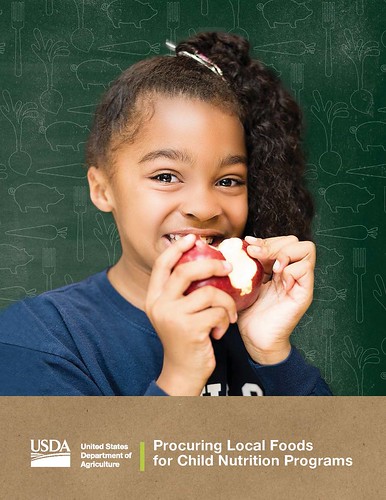
Fruits and vegetables are at the top of USDA’s back to school list, and just in time for the new school year, the Pilot Project for Procurement of Unprocessed Fruits and Vegetables is making it easier for schools in eight states to purchase them. The 2014 Farm Bill authorizes the pilot in not more than eight states participating in the National School Lunch Program, and provides them with an opportunity to better access nutritious foods. The pilot also helps create and expand market opportunities for our nation’s fruit and vegetable producers, opening the door for a variety of vendors, small growers, food hubs and distributors to supply unprocessed fruits and vegetables to participating schools.
So far, five states (California, Connecticut, Michigan, New York and Oregon) have spent over $600,000 through the pilot from February through June 2015. Several California districts contracted a produce distributor to connect local and regional producers with schools to receive peaches, cauliflower, apricots, and kale from their state. Students in Oregon are chomping on pears from the Pacific Northwest, while many Connecticut and New York schools are feasting on Macintosh apples from Massachusetts orchards and Empire apples from New York. Virginia, Washington, and Wisconsin were also selected for the pilot and will begin receiving deliveries of fruits and vegetables in the coming months.
USDA Foods provide a variety of options to bring healthy items into the cafeteria. With the flexibility to use existing distribution channels and procure these foods directly from producers, the pilot supports schools purchasing a wider variety of products from local producers when possible. As the number of vendors eligible to participate increases, so does the quantity and variety of unprocessed fruit and vegetable offerings available for purchase. The DoD Fresh Program, which also allows schools to set aside USDA Foods dollars to purchase fresh fruits and vegetables, remains an option for all states, and many schools choose to utilize both programs.
The pilot offers yet another path to expanding options available through USDA Foods and also provides an avenue for schools to support farm to school initiatives using USDA Foods entitlement dollars. For more information on how USDA Foods supports farm to school efforts, check out USDA Foods: A Resource for Buying Local and the USDA Foods section of the revised guide, Procuring Local Foods for Child Nutrition Programs.
Just as we’re exploring new avenues to get more fruits and vegetables into the lunchroom, we challenge you to find unique ways to add produce to the cafeteria this school year.
To stay up to date on all farm to school and USDA Foods activities, sign up for the USDA Foods and Farm to School E-letters.




